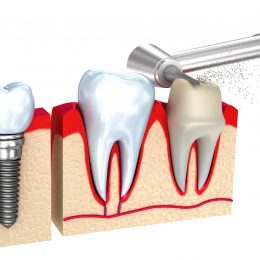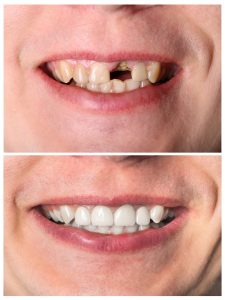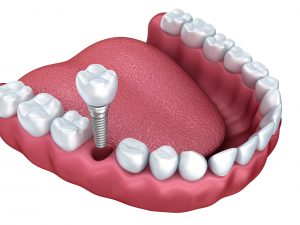Emergency dental crown: what to expect

There are several common reasons why you might have to visit the dentist for urgent care. When you need an emergency dental crown, it can be a scary and painful experience, but there are a few things you can do to make it easier on yourself. Seek quick care, treat what you can at home, and follow through on any after-care treatment that you should exercise once your dentist has helped you with your emergency crown.
Common Dental Emergencies
Injury
The most common dental emergencies are caused by injury. If you’ve had a tooth knocked out, or a tooth that’s been knocked loose, even without pain, it’s an emergency. Seek dental care immediately, because quick action can save a tooth that’s knocked out. If you have knocked a tooth out, put ice or a cold compress on the gum, especially to slow any bleeding. There are a few over-the-counter products that can also help stem any bleeding, reduce swelling, and counteract pain. Although, if you are experiencing severe pain, you should not drive, and should instead have someone go to the store for you to retrieve these medicines.
Illness
The other common type of dental emergency is caused by an “illness” of the mouth – like a sore or abscess. If you have an open or festering wound on the inside of your mouth, on your gums, or under your tongue, you may want to seek emergency care. It may not result in the loss of a tooth, but it could, or it could result in even more threatening illnesses.
Emergency Dental Crowns Caused by Root Canals
Most commonly, you will need an emergency dental crown after a root canal, which is most often caused by a cavity that has penetrated through the tooth enamel and into the central nerve of the tooth. As the harder enamel material is eroded away by bacteria, the root and inside the tooth become infected, causing pain and swelling in the gums, cheek, tongue, and sinuses. When you need a root canal, you will know, and you should schedule one as immediately as possible, because the situation will not get better on its own.
Waiting for your Appointment
Once you’ve called your dentist to schedule an emergency appointment for your root canal and potentially an emergency dental crown, you will need to manage your pain until the appointment arrives. Do your best to keep the infected tooth and surrounding gum areas clean and free of food. Rinse the tooth with warm salt water as needed to help control pain and keep the area free of new bacteria.
You may want to take over-the-counter pain and anti-inflammatories to help control swelling, especially consider medicine designed for sinus pressure. There are also tooth pain ointments that you can use by spreading them topically on the gums around the tooth, and even on the lip and cheek area, to help temporarily numb the surrounding nerves. However, be careful not to put this on your lip or any areas where you may accidentally bite yourself and cause unnecessary injury.
After the Emergency Dental Crown Appointment
After you’ve had your emergency root canal appointment, you should feel immediate relief to your tooth pain and sensitivity. Your dentist will install a temporary dental crown, and take the appropriate molds and measurements to fit you for a more permanent crown, which should be ordered for you that day. 
However, these often take up to three weeks to be sculpted in a dental lab, and you will have to return to the dentist to have your dental crown installed. By the time you return, you should be fully recovered from your root canal and ready for the crown.
In the few days that you are wearing your temporary emergency dental crown, make sure you take good care of it. Avoid eating on that side of your mouth, if possible, and especially avoid direct contact with hot or cold foods or beverages on the temporary crown. Make sure to brush the gums around the crown thoroughly, and floss between it once the swelling and discomfort has subsided enough for you to.
Enjoy your new, pain-free smile!


